Mini-colloquium October 2nd, 2019 at Stony Brook University
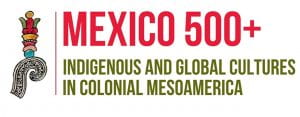
In 1519 Hernán Cortés led the first European military penetration in Mesoamerica. His campaign radically transformed the lives of local communities and shaped the new global culture of the early modern period. Mexico City and the viceroyalty of New Spain would become “the head of the Western world” and the geopolitical center for the articulation of American, European, African and Asian peoples, commodities and cultures. This one-day mini-colloquium commemorates 500 years of writing and producing global knowledge in and about Mexico.
Sponsored by the Department of Hispanic Languages and Literature, the Humanities Institute, the Latin American and Caribbean Studies Center and the Office of the Provost. Contact information: paul.firbas@stonybrook.edu
PROGRAM:
Wed. October 2nd, 2019 , Stony Brook University, Humanities Institute (see campus map)
12.00-12.45 pm. Lunch (Humanities Institute)
1.00-2.00 pm. Provost's Lecture Series (Humanities 1006) [youtube]
Camilla Townsend (Rutgers Univ):
“Indigenous Historians in Colonial Mexico”.
Discussant: Paul Firbas (SB Hispanic Lang and Lit)
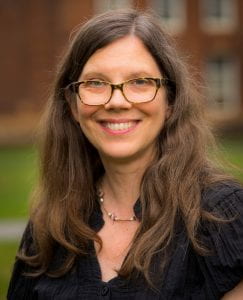 2.30-4pm. Rethinking the Writing of Mexican History (Humanities 1008)
Iris Montero (Brown Univ):
“Nonhuman Stories and the Shape of History in Mexico”
Stephanie Rohner (Oklahoma State Univ):
"Héroe del artificio: Cortés, the Conquest of Mexico, and the European Enlightenment”.
Discussant: Elizabeth Newman (SB History)
2.30-4pm. Rethinking the Writing of Mexican History (Humanities 1008)
Iris Montero (Brown Univ):
“Nonhuman Stories and the Shape of History in Mexico”
Stephanie Rohner (Oklahoma State Univ):
"Héroe del artificio: Cortés, the Conquest of Mexico, and the European Enlightenment”.
Discussant: Elizabeth Newman (SB History)
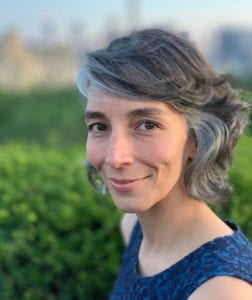
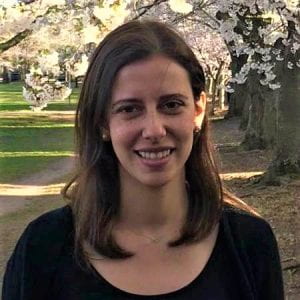 4.30pm-5pm. Reception (Humanities Institute)
4.30pm-5pm. Reception (Humanities Institute)
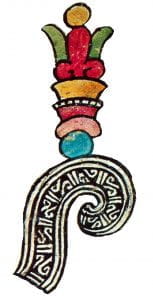 Click here for our Mexico 500+ poster !
Click here for our Mexico 500+ poster !
Reseñas del coloquio / Colloquium Reviews by students of SPN 395 Fall 2019
“Truth was composite”
By Anita Rescia
El último miércoles, tuve la increíble experiencia de asistir al coloquio de México 500+ en que escuchamos a las Profesoras Townsend, Montero y Rohner hablar de la historia y la cultura indígena en la época antes, durante y después de la conquista española que ocurrió ya hace 500 años en 1519.

Aprendí que, de una cultura que solemos escuchar que hemos perdido casi todo, todavía tenemos artefactos, textos históricos y literarios y costumbres que se conservan hasta hoy en día que nos revelan mucho de la cultura indígena prehispánica. Por ejemplo, los xiuhpohualli o Anales de que nos habló la Profesora Camilla Townsend nos permiten entender la estructura política y social de los indios de los altepetl. Además, nos demuestran el intento de conservar las propias historias de su cultura para su progenie. Me llamó mucho la atención cómo los indios escribían varias veces la misma historia desde diferentes puntos de vista. Como dijo la Profesora Townsend, “truth was composite”, o la verdad era compuesta, y solamente un recuento no habría sido suficiente para reflejar las experiencias de toda una población. Eso me parece un concepto extremamente importante que todavía tiene vigencia, porque muchas veces nos contentamos con la perspectiva de una persona, o de una fuente de noticias, en vez de dedicarnos a la investigación de varios puntos de vista para ver si se narra la verdadera historia o si es otro ejemplo de “fake news”.
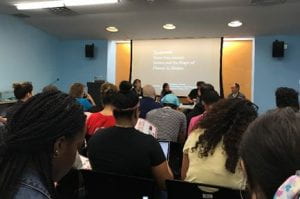
Otro ejemplo de costumbres que tienen su origen en el mundo indígena prehispánico es la cultura del colibrí que nos explicó la Profesora Montero. Se representa a Huitzilopochtli, dios de la guerra y protector, con la imagen del colibrí, un animal suave, rápido y lindo, pero a la vez belicoso. El colibrí se asocia también con la migración, dado que es el pájaro que migra lo más lejos que los demás. Por eso, todavía los migrantes pueden portar chupamirtos, o llevar consigo algún amuleto de un colibrí para protegerse durante el viaje peligroso. ♣
Anita Rescia is an undergraduate student in the Department of Hispanic Languages and Literature at Stony Brook University. She is currently taking SPN 395.
Review Quotes and Pictures
Thanks to all SPN 395 students that helped during the organization of this colloquium and that sent their texts and pictures!
¡Mil gracias y los felicito por su trabajo!
Suzanne Tawch:
European documents such as letters written by conquistadors can be biased in order to reinforce their own motives. I think as a historian, it is important to find evidence from different perspectives to create one whole understanding of the time period.. It was interesting to learn that history [withing the Nahuas] was maintained verbally and graphically through paintings, art and performances. Often facts such as timelines, current leaders, and natural disasters were recorded. These paintings and writings were shared throughout the community amongst family and friends. They were shared with each generation. I thought this was interesting because these documents were solely made for their own benefit.
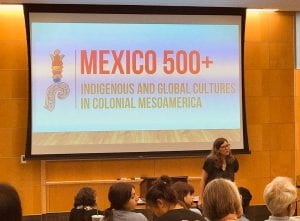 Danielle Polito:
Danielle Polito:
I recently had the pleasure of attending the Mexico 500+ colloquium. I had the opportunity to attend Camilla Townsend’s lecture about indigenous historians in colonial Mexico. This was an extremely interesting topic for me, especially after all that I have learned in class about the colonization of Latin America.
Melissa Ramos-Lemos:
El punto que más me llamó la atención fue la importancia de la percepción y la manera en la que se interpretan los escritos indígenas. La doctora Townsend explicó que los escritos indígenas fueron interpretados y publicados como anales por los europeos en los siglos XVII y XVIII, cuando los europeos encontraron los escritos por primera vez. Los españoles compararon los escritos indígenas con los anales europeos y los categorizaron como anales indígenas. Esto tuvo muchas consecuencias en la interpretación de la cultura indígena por parte de los europeos. Antes de la intervención española, los indios tenían artistas que dibujaban hechos reales y luego aprendieron el alfabeto romano, con el tiempo empezaron a transcribir historias con dibujos sobre lo que ocurría en sus civilizaciones. La dra. Townsend explicó que los indios no escribieron esto con consideración de los españoles. Ellos lo escribían para conservar sus historias y cultura entre ellos mismos, usaban estos escritos para producir más historias y basar las interpretaciones de sus culturas entre familias. Los nahuatl no tradujeron los escritos en español porque no tenían la intención de que fueran leídos e interpretados por los españoles.

Jewel Estrella:
El miércoles, yo tuve el honor de oír a Camilla Townsend, una historiadora y profesora distinguida de historia en la Universidad de Rutgers, hablar sobre los relatos de las indígenas de México, específicamente los Aztecas. Durante su charla ella nos explicó que estos documentos son muy raro de encontrar. Estos textos desarrollan la cultura indígena a través la perspectiva indígena, usualmente estos textos están diseñados para las ideas Europeas. Como lectores, podíamos ver que estos anales explicaron interacciones entre una nahua y un español. Los anales fueron creados por las indígenas como manera de transmitir información de sus antepasados a sus hijos. Esencialmente, estos documentos sirvieron como fuentes ricas culturalmente que ayudaron a los historiadores comprender las tradiciones indígenas más allá de los ideales europeos.
Emma Zoubek:
Para mi la parte más interesante del evento fue cuando Iris Montero discute su texto “Nonhuman Stories and the Shape of History in Mexico.” Ella se enfoca en la relación de los indígenas de México con los animales y el medio ambiente. Montero discute la importancia del colibrí en las culturas indígenas. Los colibrís están en las religiones de muchos de los indios, especialmente los mayas y aztecas. Hay diferentes cuentos de sus orígenes y su papel en la vida humana. Ella explica los textos y artefactos en que se descubren que los indígenas tienen esta relación con los colibrís. Los indígenas piensan que los colibrís pueden traer buena suerte en la concepción de un nuevo bebe y en la fertilidad en general. Además, los colibrís están asociados con los fuegos en muchas de estas culturas. Fue muy interesante para aprender sobre la relación entre los indígenas de México y los colibrís porque es algo que no había escuchada antes de esta presentación.


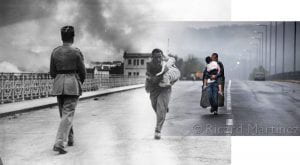


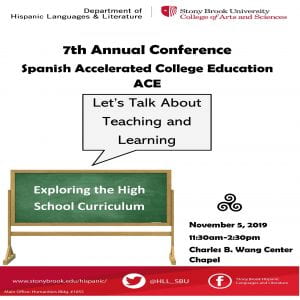










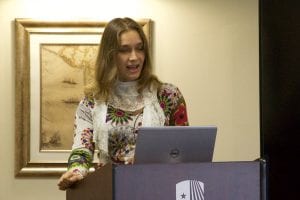
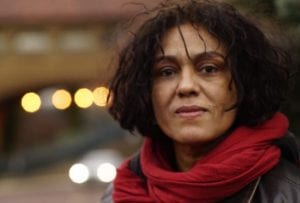
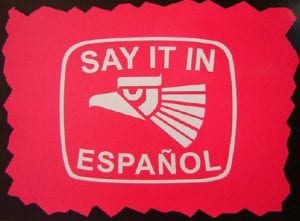





 Courtesy of the John Carter Brown Library
Courtesy of the John Carter Brown Library